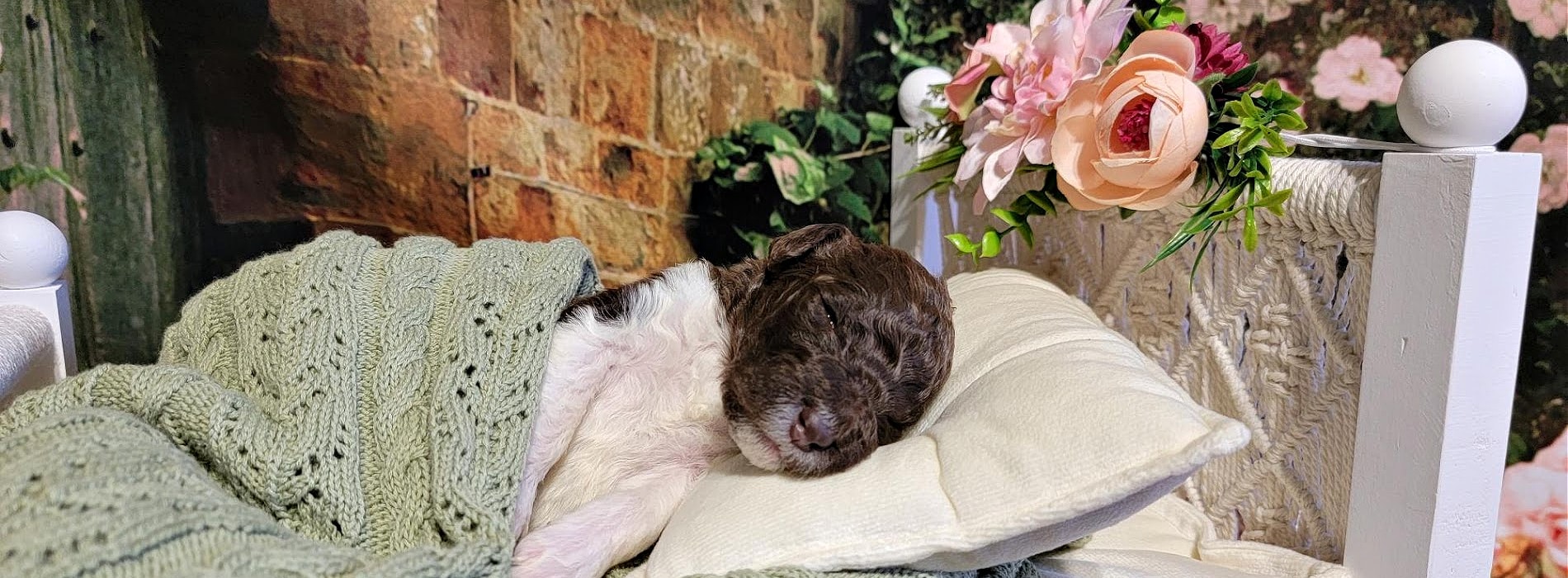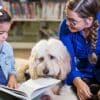Welcome to the enchanting world of Labradoodles by Cucciolini! Step into our realm where fluffy tails wag with joy, playful barks fill the air, and boundless love for these charismatic creatures knows no bounds. Our passion for breeding and caring for Labradoodles shines through in every paw print, snuggle session, and tail-wagging greeting. Join us on this heartwarming journey as we share our little piece of canine paradise with you!
To ensure a smooth journey, I highly recommend having a caring companion by your side who can sit beside the puppy crate, offering comfort and companionship throughout the ride. It will help alleviate any fear and make your furry friend’s experience as pleasant as possible. To enhance air circulation and minimize the risk of car sickness, consider cracking open your car window by approximately two inches. This simple action can go a long way in ensuring a comfortable and nausea-free journey.
Allow the puppy time to settle down and feel more comfortable in the vehicle. To be prepared for unforeseen situations, I recommend having a towel handy if the puppy feels sick during the car ride. Everyone needs to remain calm and avoid anything that might scare or distress the puppy if it is not experiencing any discomfort.
Let’s start with some essential items to ensure a smooth homecoming for your Labradoodles by Cucciolini puppy.
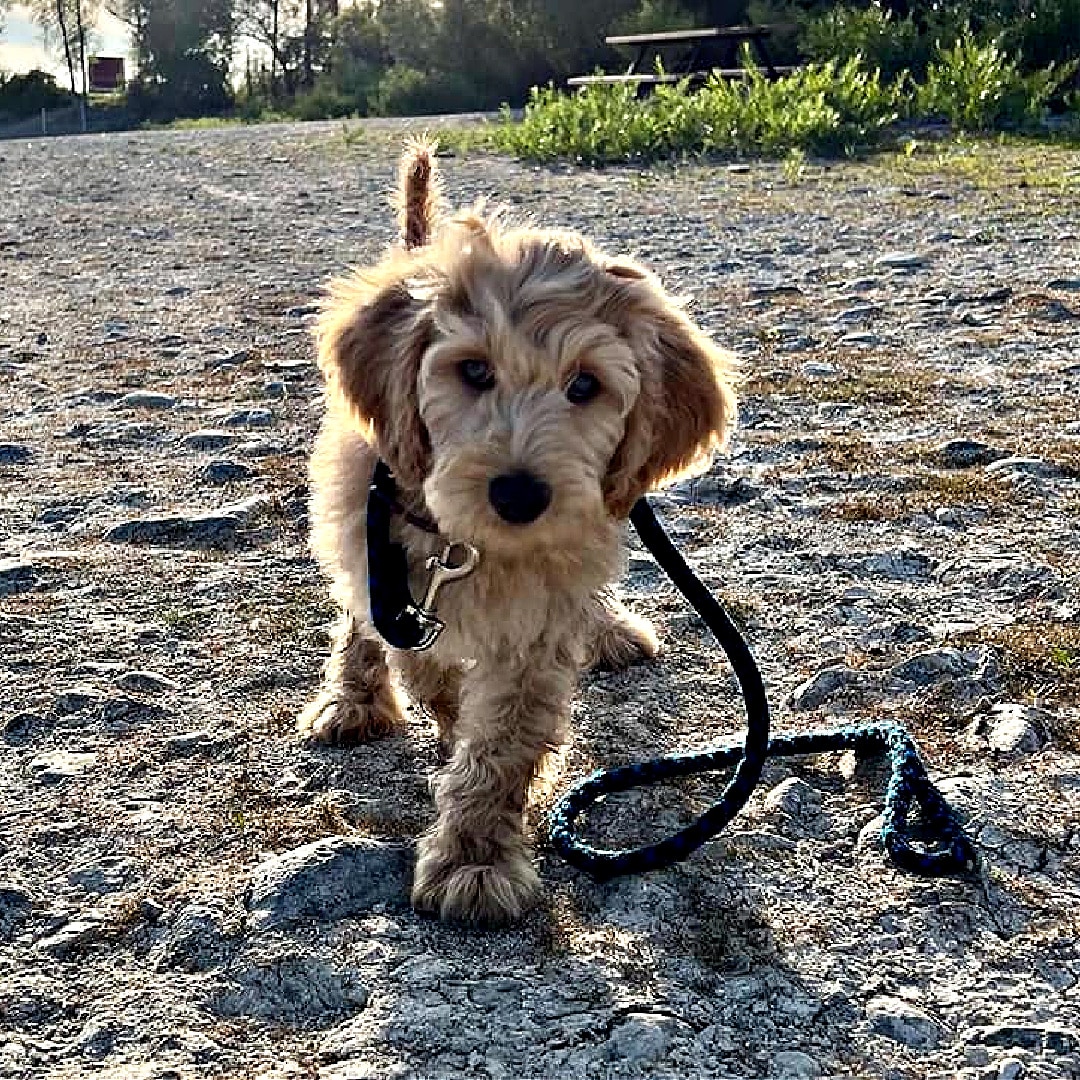
- Collars & leashes. The puppy will need a collar and leash.
- You will need to buy a Crate that is 42 inches in size.
- The dog Bed must be large enough to accommodate the Puppy’s maturity.
- You will need to purchase a Food and Water bowl.
- When buying treats, look for one Ingredient treat that is best to avoid an allergic reaction.
- You will also need Grooming supplies such as a Comb, Brush and Shaver.
- Identification Tags for his Collar.
- Include a variety of Kong Toys to keep the puppy occupied.
I am getting ready for the puppy’s arrival.
- When the puppy arrives at his new home, keeping the home calm as you enter is vital, as a puppy will be afraid of strange loud noises that can be overwhelming.
- Introduce your dog to his crate upon arrival.
- Start your training by showing the puppy where he needs to be eliminated.
- Set up a daily routine.
- Register for a dog’s license as soon as possible so you can attach the Tag to the collar if he gets lost.
- Find a veterinarian so that the puppy can get his complete Immunizations.
Home at Last, very exciting!
Giving your new puppy forty-five minutes to settle down in its new environment is best. While some may suggest taking the puppy on walks around the neighbourhood, it’s recommended only to do this in your front yard, away from public sidewalks where other dogs may have left traces of the Parvo virus. Parvo can linger on soil or grass for up to six months, so it’s important to refrain from allowing your puppy access to other people’s lawns until they are at least 16 weeks old. Instead, take them to your backyard for elimination during the first few weeks until they have completed all required vaccinations.
Missing Mom and Siblings
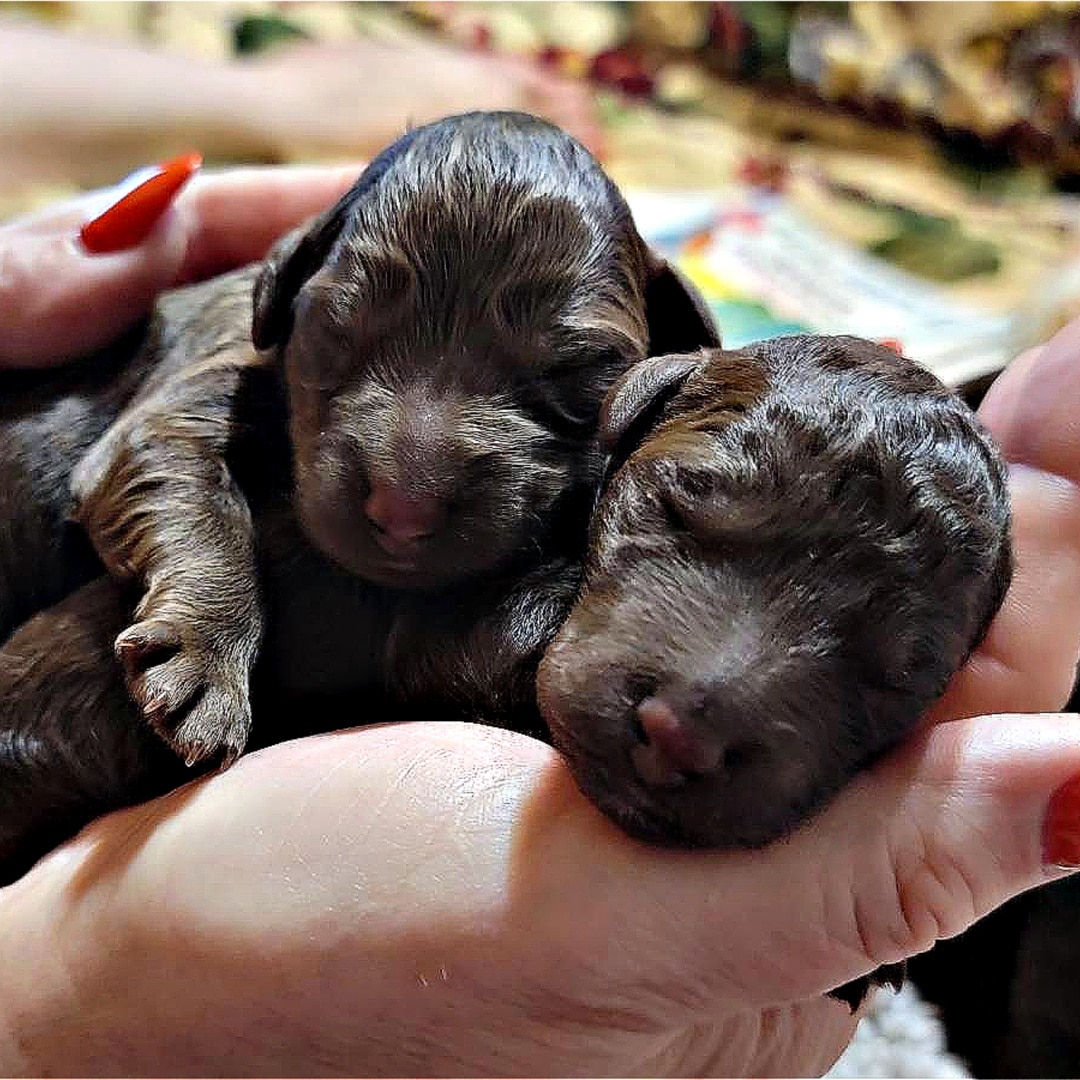
Leaving his siblings will probably bring about some anxiety. It’s vital if you have young children to discuss that being calm around the puppy will be necessary. It may take time for the puppy to adjust to his new family. Once the puppy is comfortable within his new home, you can allow children to play with the new puppy slowly while keeping an eye on how the puppy is adjusting.
Feeding Schedule for Puppies
Your schedule will dictate the puppy’s feeding schedule. When you first arrive home, do not leave food out for the puppy immediately, as the puppy will be curious and excited to walk through his new home; you will need to monitor how much he is eating when you offer his Breakfast, Lunch, or Dinner. You want the puppy on a feeding and potty schedule as soon as possible, as they love routine. The Puppies at Labradoodles by Cucciolini are fed twice daily under six months of age.
Puppy Training
The puppy will need to know where to go to the bathroom. Before the puppy eats in the morning, when waking, you must set a feeding schedule that will accommodate your work schedule. A sample plan will consist of Breakfast at 8 am and dinner at 5 pm with water in between throughout the day, ensuring the puppy is flourishing and helping make house training more accessible. Make sure to give the puppy quiet time after his meals to help him digest, and make sure the children are not playing or picking the puppy up for one hour after eating, as it can lead to stomach upset.
Bathroom Breaks
The puppy must go to the bathroom ten minutes after Breakfast or Dinner. A Puppy’s feeding schedule must include two meals a day, preferably at the same time daily. Should schedule training for the puppy’s meal at eight am for breakfast and five pm for his dinner, giving the puppy time to digest his food and eliminate it before bed.
What brand of food should you feed your puppy?
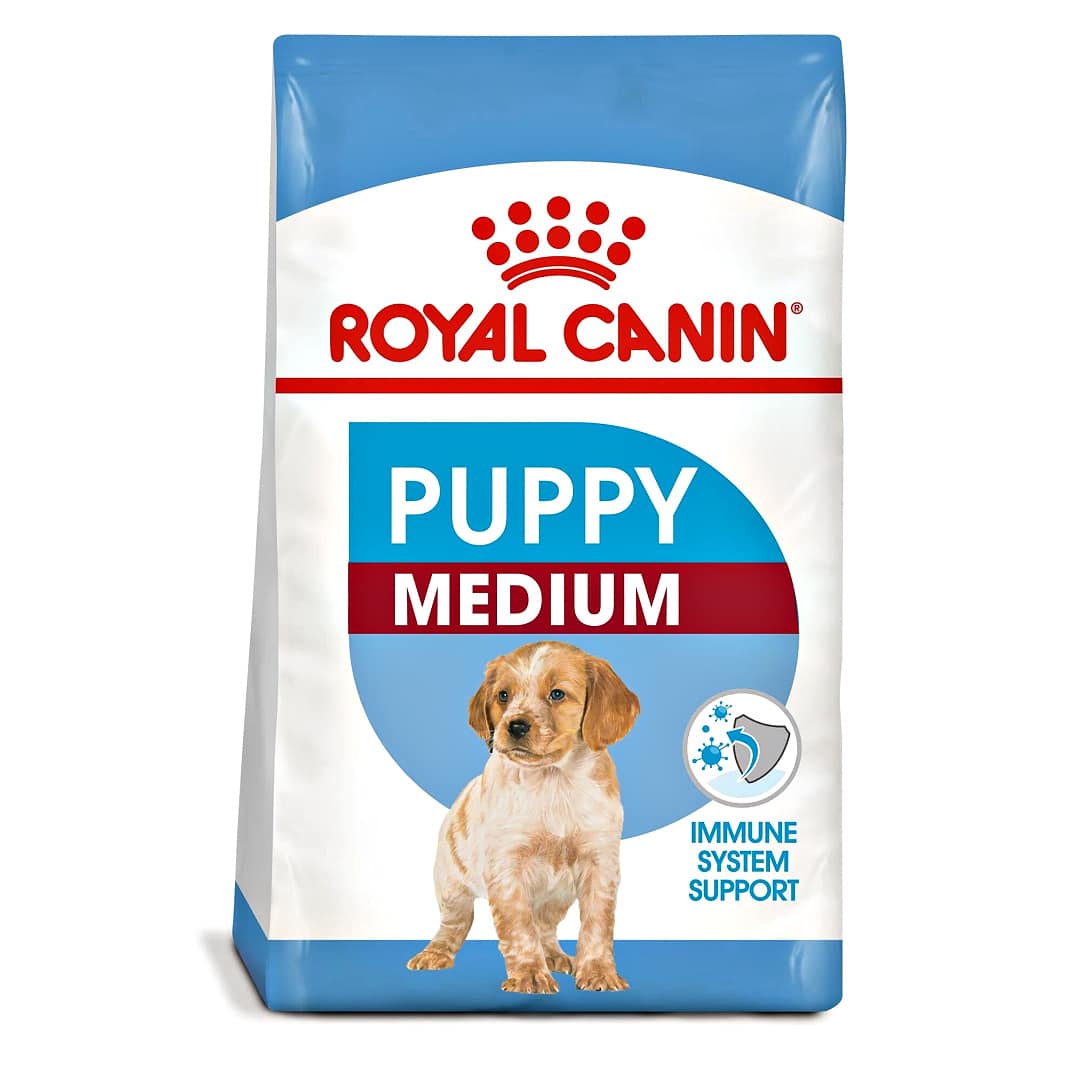
The kibble should be a healthy and well-balanced diet for Puppies. We at Labradoodles by Cucciolini feed our puppies Royal Canin. Refraining from less expensive dog food that contains fillers and sugars rather than high-quality kibble will help with complete nourishment as the puppy matures.
Cheaper foods can affect your puppy’s long-term growth and overall health, cause constipation or diarrhea, and make house training much more challenging. Low-quality dog food can also cause skin issues, allergies, dull coats, itchy skin, ear infections and more. So it is best to continue feeding the food we have recommended for the best quality.
Daily Cucciolini Puppy Schedule: Taking your puppy home
- Breakfast: Take your Puppy out to eliminate. It is also an excellent time to play and interact with your New Puppy.
- Breakfast time: Start with a cup of Royal Canin Kibble, and once the puppy is finished eating, give it water. Also, be sure to change the water daily.
- After Breakfast: While you are busy getting ready for work or school, taking the puppy for a quick walk after Breakfast will help give the puppy a chance to eliminate before you leave for work.
- Mid-morning: After a busy morning, the puppy might need to nap. The puppy must also go out at least twice before Lunch. If no one is home, consider hiring a pet sitter to walk him.
Puppy Schedule Continued
- Noon: Lunchtime starts with a trip outside to eliminate, followed by the puppies’ meal and a drink of water. Once Lunch is finished, wait 10 minutes and take the Puppy out to stop again.
- Mid-afternoon: It’s probably nap time again.
- Dinner: Arranging the puppies’ meal around yours will help the Puppy familiarize yourself with feeding him while preparing your dinner. Be sure to provide the Puppy first to ensure he is not begging.
- Evening: If you have time, an evening walk outdoors would help him exercise and take a break to eliminate and create bonding time.
- Bedtime: Set a time before your sleep for the Puppy to stop so there are no accidents in his crate; whether it’s eight pm or midnight, it will not matter as long as it becomes a routine. After the Puppy has been taken outdoors to eliminate, take him to his crate and help him settle for the night.
Feeding Schedule
Puppies eat two small meals daily, depending on whether you are working from home; feeding the puppy twice daily is also beneficial as it is healthier for his health. Each feeding should consist of one and a half cups of kibble as a puppy and give more as he matures; measurements are located on the side of the kibble bag. All meals should be consumed by eight p.m. so the puppy will sleep with an empty bladder or bowels so they can sleep through the night with little potty breaks.
If you set a puppy schedule as soon as you take your labradoodle puppy home, your puppy will be on his way to becoming a happy and well-adjusted puppy. It is worth putting in the time and effort only after the puppy matures and sets on less acceptable behaviours.
Why is my new Labradoodle by Cucciolini Puppy Not Eating?
The puppy isn’t eating; that can happen when he is in a new home away from his Mom and siblings. Every puppy is different and how it reacts in its new home. When a puppy is in our care with his siblings, puppies generally follow what the siblings do; if one is eating, they all eat and follow one another. The period of adjustment should last at most ten days.
Too Much to Handle
The puppy just got into a new home with new people, smells, and noises, disrupting the routine he was accustomed to when he was with his Mom and Siblings. This will disturb the routine, and the puppy will become stressed and scared, but constant hugs will reassure the puppy that he is Loved and not afraid. Give lots of hugs and kisses.
The family wants to visit the New Puppy.
As much as you are eager and want to invite your family and friends to meet your new puppy, it is best to give your puppy space and time to adjust to his new home. Not to mention that the puppy needs to be fully immunized before being held or kissed by Family and Friends. A new home can be scary for many dogs, so take time with the puppy to get introduced.
Bringing your puppy home is an incredibly exciting experience.
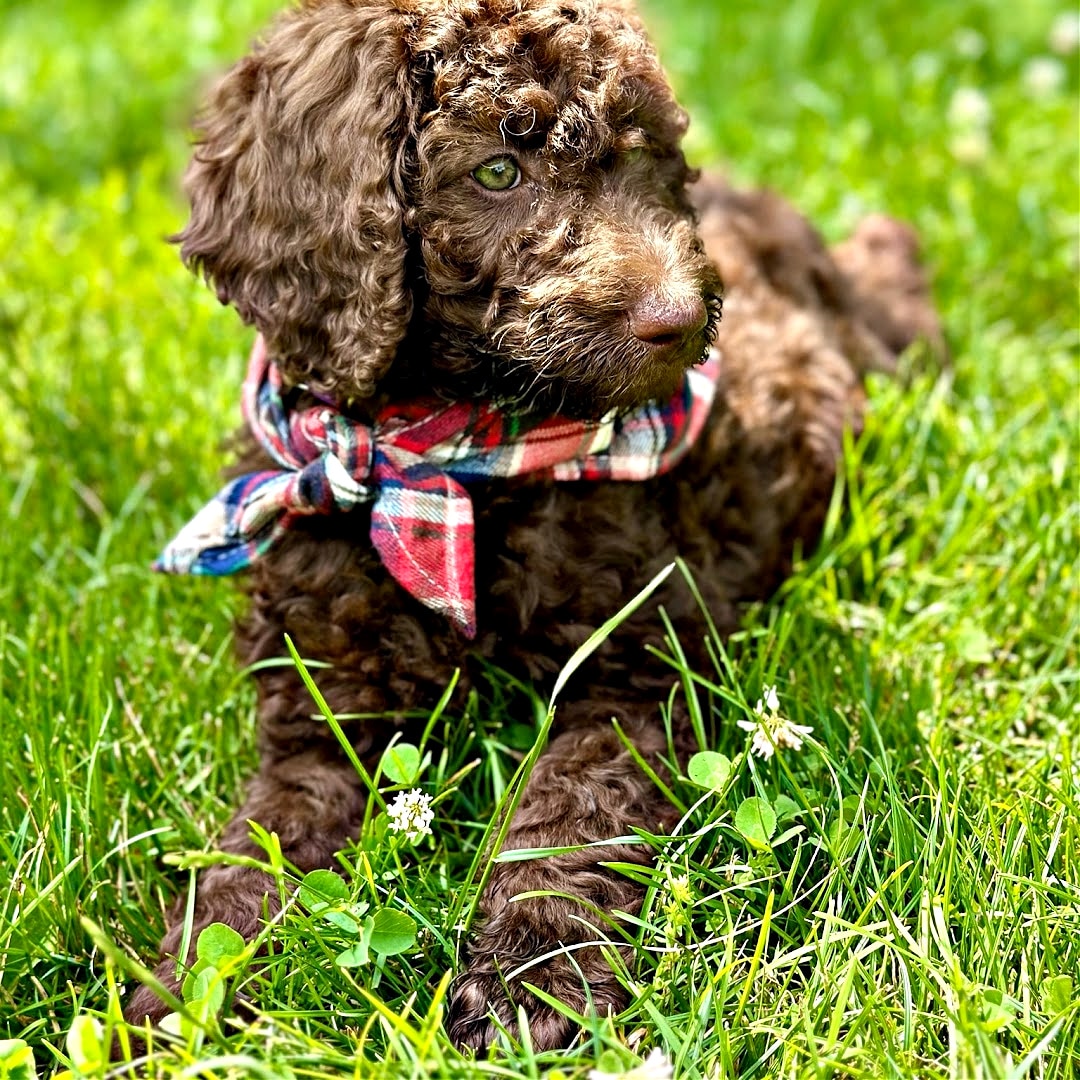
Most puppies may be excited the first day they arrive in their new home. Your new puppy will be moving around your home as it explores, and he is excited to get attention from his new family. He may also refuse to eat because of all the different sounds, the many new faces, smells and sounds. It may take time for the puppy to adjust to his new environment and eventually calm down. Finally, once the puppy is settled and relaxed, he may curl up on his new bed and nap on his first day with his new family.
Puppy is Missing his Mamma and Siblings
If you get a new puppy, he might feel lonely and scared of being in his new home. The puppy has been accustomed to living with his mother and siblings since birth; it’s understandable for him to whine and feel lonely during the first 3 – 4 nights away from his family. If your puppy refuses to eat, give him time and some company when eating instead of being alone. It is vital to keep puppies hydrated as puppies are susceptible to low blood sugar and must often drink to ensure they stay hydrated, especially in the summer heat.
Encourage your Puppy to Eat when he arrives home.
Upon arriving at the puppy’s new home, the puppy might now be interested in eating; don’t force him. Once the puppy adjusts to his home and schedule, he will start eating again. Walking and playing with him help bring back his appetite and create a bond with the new family.
Crate Training for your new puppy.
Crate training your new puppy can take time, depending on the puppy’s temperament. Remembering this during crate training is essential, as training should always be associated with a calming experience for the puppy to feel happy. Crate Training should take place in small steps rather than slowly.
Step 1: Take your Labradoodle Puppy home and introduce the Puppy to a crate.
Making sure to place the Labradoodle puppy crate in a room where the puppy is supervised and where the family will spend much time, such as in the family room, would be acceptable. Putting a soft blanket or a towel in the crate for comfort, and if the puppy eliminates it, he will not become soiled as the towel will absorb it. Leaving the crate door open will allow the dog to explore his cage and give the puppy the opportunity to come out. Some puppies will be curious and start sleeping in the crate immediately.
Is the puppy having a hard time adjusting to his crate:
- Carry them over to the crate, talk to them softly, and try engaging them with a toy to see if that helps. Also, ensure the crate door is open and secured so as not to cause injury.
- Encourage your Puppy to enter the crate by adding small treats inside the door. Finally, as the Puppy eats them, distribute more kibble further in the cage, allowing him to go deep inside the crate. If the Puppy refuses to enter, that is OK, as it will take time. Don’t ever force a puppy.
- Try tossing treats into the crate until your dog walks into his bed and is calm. Suppose the puppy isn’t interested in treats. Throwing the puppy’s favourite Kong Toy in his crate and adding a tiny amount of Peanut Butter to the toy may help the puppy feel comfortable.
Step Two: Feeding your dog meals in his crate
- If your puppy is not entering the crate when you begin Step Two, place the food dish far back where he will likely go.
- If the Puppy remains reluctant to go, place the bowl only as far inside as it initially went when he became comfortable. Every time you feed the Puppy, try putting the Puppy’s food back in the crate until he gets used to it.
- Once your puppy sits comfortably to eat, you can close the door while it eats its kibble. As the puppy finishes his meal, open the crate door after each successful feeding.
- If they begin to whine about being let out, you may have increased the length of time too quickly. Next time, leave the Puppy in a crate for shorter periods, and if the Puppy still does not stop whining, don’t let the Puppy out of the cage until the crying stops. Otherwise, the Puppy will learn that the way to get out of the crate is to whine, so they’ll keep doing it until they get your attention.
Step Three: Practice with more extended crating periods
After your dog eats in the crate with no fear or anxiety, you can confine them there for short periods while you’re home so you will see if he is getting accustomed to the crate.
- Calling the Puppy over to the crate and giving them a treat helps them know that when you call them, they will be offered a treat, making crate training easier.
- Giving your puppy a command to enter the crate, such as “kennel,” will encourage the puppy to go in with a treat.
Extended Crate Training
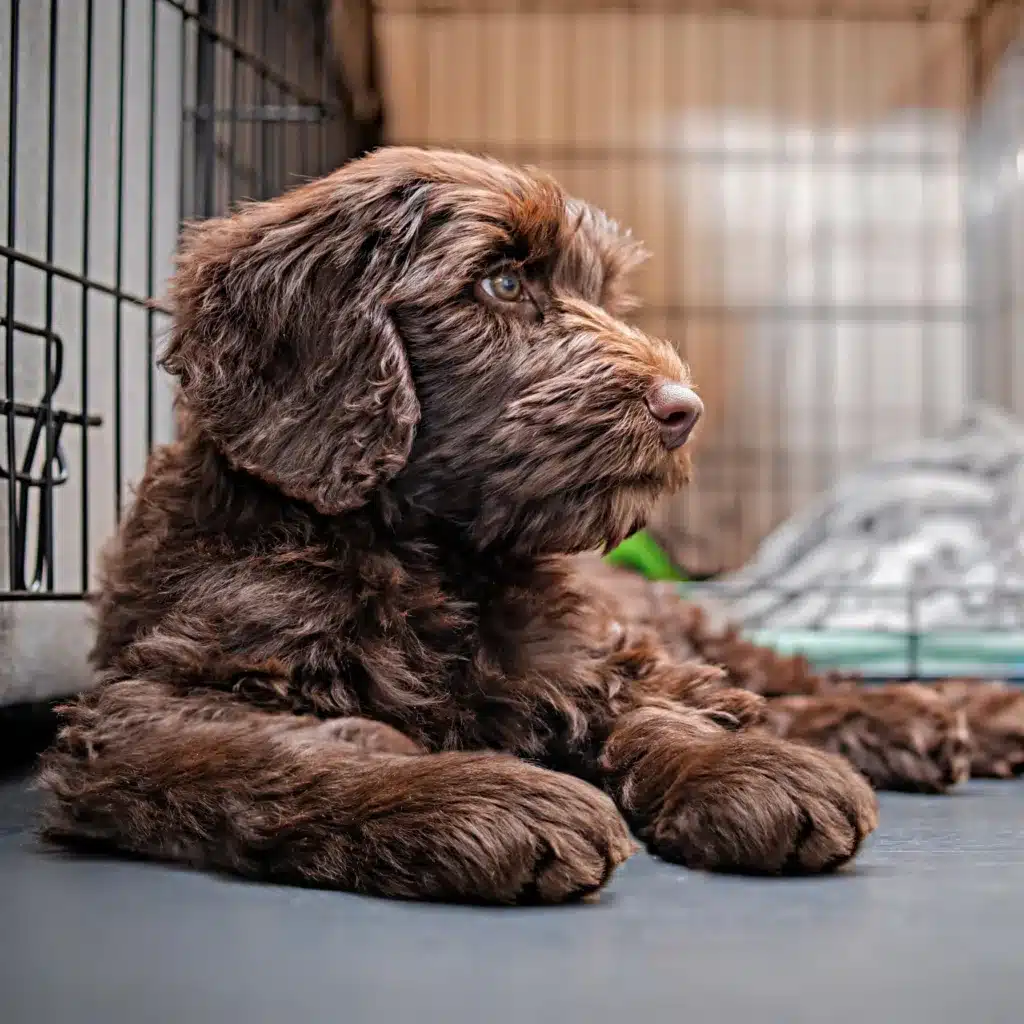
- After your puppy enters his crate, praise them by giving them a treat and closing the door.
- Sit quietly near the puppy for five to ten minutes, leave for 10 minutes, return, sit quietly for a few more minutes, then remove the puppy from the cage.
- Repeating this process several times a day while gradually increasing the times the puppy is in the crate will help the puppy adjust to his routine.
- Once the puppy is quietly relaxing in his chest, leave him for about thirty minutes with you primarily out of sight, then begin leaving the puppy crated when you are gone for short outings, including at night.
Step Four: Crate your dog when you leave home.
Once your puppy shows that he can spend thirty minutes in the crate without becoming upset or afraid, you can start leaving the puppy crated for short periods when you are not home.
- Place the puppy in the crate using your regular command and a treat. Leave the puppy with a few safe toys.
- Vary the moment you put your dog in the box during your “getting ready to leave” routine and see what happens. The Puppy should always be included in a cute long before you go out. It’s best to place the Puppy in the crate just before you leave.
- Do not make your departures emotional and prolonged; praise your dog, treat them, and go quietly.
Step Five: Crating your Puppy at night when all have gone to bed.
Putting your puppy in bed using your regular command and a treat might help the puppy go to bed. Placing the crate beside your bed frame may be an excellent choice if the puppy cries. Many puppies might need to be eliminated at night, and you’ll want to hear your puppy whine about being able to take them outside to make sure not to soil his crate.
Once a puppy feels comfortable in their crate, it becomes a safe place to relax and rest.
Once your puppy is home and comfortable sleeping through the night with the crate next to your bed, you can gradually move it to another location of your choice.
How do vaccinations protect your puppy from diseases?
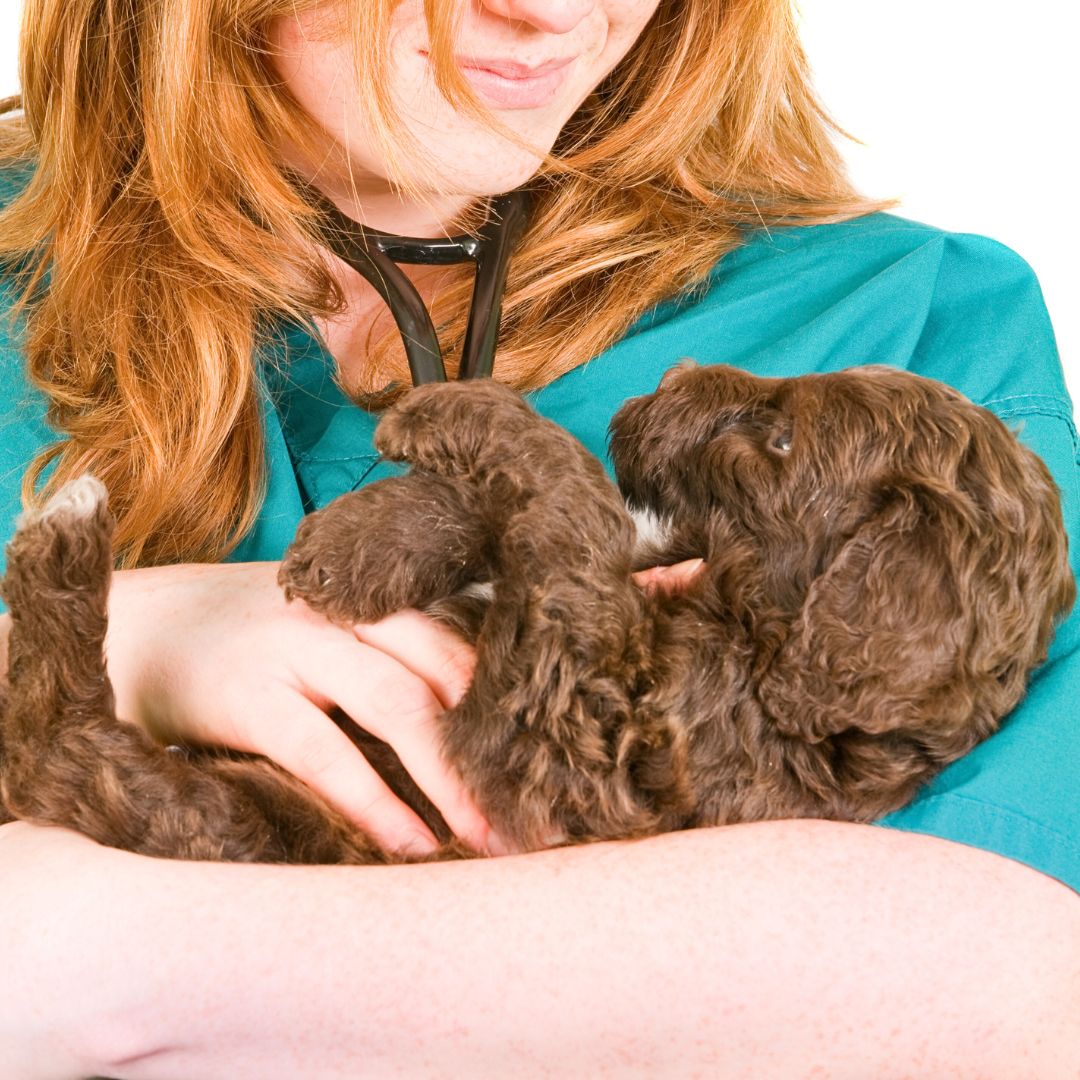
They help fight diseases caused by viruses or bacteria and help stop infections from continuing use. When your puppy receives the vaccine, this immune system will start producing antibodies to protect against viruses and bacteria that cause disease in puppies. Once your puppy gets an infection, the antibodies built in the puppy’s body will help destroy viruses and bacteria immediately; it is vital to vaccinate your puppy and schedule the puppy’s first vet visits, and the vaccinations organize your pup’s needs.
Why do puppies need to receive multiple vaccines?
Canine offspring receive vital protection against disease during their initial months through the antibodies in their mother’s milk. Vaccinating puppies until they have reached at least sixteen weeks of age is paramount to safeguard their health.
DISTEMPER
This virus is highly contagious among dogs and can cause various symptoms, including fever, coughing, sneezing, vomiting, diarrhea, seizures, and pneumonia.
Hepatitis in Dogs
Hepatitis is a severe viral disease that affects dogs’ livers, kidneys, lymph nodes, eyes, and other organs. The virus can spread through an infected animal’s stools or urine at a park or on the grass at home. Signs of the virus in dogs include high fever, no hunger, and thirst. In some cases, bloody diarrhea is present. Hepatitis is severe in very young puppies.
LEPTOSPIROSIS
Dogs can develop lung disease, causing difficulty breathing. Leptospirosis can lead to internal bleeding, vomiting, and other symptoms. Red spots may appear on gums and light-coloured skin.
PARVOVIRUS
Dogs become infected with Parvo-virus through the stool sample of an infected dog or in contaminated environments. The virus is brutal to treat and remains infectious in the background for a long time. Puppies are most affected and susceptible to parvovirus. Parvo-virus can cause severe bloody vomiting and diarrhea. Fatalities occur mainly in young puppies under 12 weeks old, and prompt veterinary care is vital to recovery.
BORDETELLA (Parainfluenza)
Also known as kennel cough, Bordetella disease is a respiratory infection that can cause persistent coughing in dogs for weeks or even months without proper treatment. It is usually not fatal unless pneumonia develops.
RABIES
Rabies is a dangerous condition that can affect all warm-blooded animals. It usually spreads when an infected dog bites another dog or a person. The virus attacks the nerve tissues and causes the disease to develop. Rabies poses a significant threat to both people and animals. It is essential to ensure your dog receives the Rabies Vaccine when they are young to protect puppies from this disease.
LYME DISEASE
Lyme Disease is a growing concern that affects not only our beloved pets but also poses a significant threat to human health. This illness can seriously affect our well-being and domestic animals, such as dogs and cats. Understanding Lyme’s risks is crucial to protecting ourselves and our furry friends from this pervasive and potentially debilitating condition.
POTTY SCHEDULE
Your puppy will need to go outside and eliminate after each meal:
- Morning, as soon as the puppy wakes
- Again, after eating in the Morning & Evening
- When the puppy wakes up from an afternoon nap
- When a puppy is playing
- As soon as he comes out of his crate at anytime
Signs of a puppy that needs to be eliminated will start sniffing and circling. Puppies can easily choke on bones, stuffed toys, bed insulators, and blankets, so be very careful and buy only good quality toys and bones and not blankets with an insulator as the puppy can choke!
Feeding Requirements for Puppies
- Water & food bowls
- Dog food
- Dog food storage bin
- Dog food scoop
Supplies for Walking Your Puppy
- Collar
- ID tag
- Leash
- Waste bags & dispensers
Ways to Help Your Puppy Sleep Better
Training Supplies
- Dog crate
- Crate pillow or pad
- Potty training pads
- Dog treats
- Dog door
- Poop Scoop
Basic safety needs
- Dog first-aid supplies
Puppies Play
- Plush toys
- Chew toys
- Fetch toys
- Rubber toys
- Rawhide chews
Travel
- Dog carrier
- Pet Insurance
Wellness
- Dog-calming & stress-reducing products
- Dog dental care
- Dog vitamins & supplements
- Flea & tick treatment
Grooming tools
- Dog brush & comb
- Dog shampoo & conditioner
- Dog nail-clippers
Conclusion:
Enjoy the Journey with Your New “Labradoodle by Cucciolini” Puppy!
When bringing a new furry friend into your life, nothing compares to the joy and excitement of welcoming a “Labradoodles by Cucciolini” puppy.
Remember to cherish every moment as you embark on this new journey with your Labrador puppy.
With proper care, training, and love, your Labradoodle by Cucciolini puppy will grow into a well-rounded and beloved family member. Whether going on long walks in the park or curling up together for a cozy evening at home, the bond you form with your furry friend will be unbreakable.
Investing time in training your Labradoodle puppy will ensure good behaviour and strengthen the bond between you both.
Patience and consistency are key as you teach them basic commands and house manners. Their innate intelligence makes them quick learners who thrive on positive reinforcement.
Furthermore, proper nutrition and regular veterinary care are essential for maintaining their health and happiness.
Remember that owning a Labradoodle by Cucciolini puppy is not just about having a pet; it’s about forming an everlasting friendship. They will celebrate life’s joys with you and offer comfort during challenging times. Their unconditional love knows no bounds.
So embrace this exciting chapter as you welcome your new “Labradoodle by Cucciolini” puppy into your home. Enjoy every wag of their tail, every wet nose nudge, and every slobbery kiss they give you. Together, create beautiful memories filled with laughter, love, and endless adventures.

